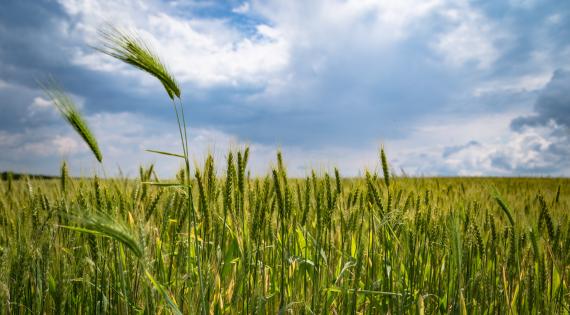Crop yields ultimately determine how much food is produced per hectare of farmland. Whilst the quality and nutrient content of the crop is also important, yields are used as a key metric by which to determine the productivity of farmland across the agricultural sector. Understanding how crops yields vary with the weather, agricultural management, soil properties and landscape context is therefore vital in identifying pathways towards farming that both achieves NetZero and remains productive. AgZero+ is working to map and model yields across the UK.

Satellite yield mapping
The AgZero+ National Centre for Earth Observation group at University College London are developing maps of estimated crop yields at the field to sub-field scale. We are using Sentinel-2 satellite data to derive key parameters on crop development and health, which then act as inputs to process-based models to predict yields for major crops (e.g. winter wheat). By mapping historic yields we can explore which agricultural practices and environmental factors are important in boosting or limiting yields, as well as identifying which areas of fields are least productive and therefore potentially better suited to non-crop habitats.
Precision yield network
AgZero+ is working with farmers to build a network of precision yield datasets from across the UK. Precision yield data is recorded by most modern harvesting machinery and can provide valuable insights into how yields vary at the sub-field scale, revealing the influence of individual habitat features and management methods. Precision yield data is also a valuable source of validation data for our satellite-based yield models.
If you collect precision yield data and are interested in seeing how it might be used by AgZero+, head to our Get involved page.